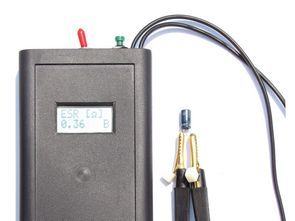
USB ESR Meter Circuit The main part of the meter is a ATmega8 microcontroller that controls the entire device. Its main the task is to process measured data and perform calculations so that the result is real ESR value. This value is displayed on the LCD. Another task of the ATmega8 microcontroller is communication with a USB controller that then communicates with a computer, that is sends measured data and allows the meter to be controlled via the computer. The requirements of the A / D converter in this particular application, ie the ESR meter, are not at all critical for the transfer time. There is no need for a high-speed converter, it will also be slower, which will also result in greater accuracy, which is for the application important (ESR meter does not need to measure ESR value many times per second, it is enough once per second, but accuracy is important).
Another important parameter converter is a resolution. This depends on the desired measuring range of the meter. The advantage is using a multichannel converter, when it is possible to measure other than ESR quantities. A typical example is the measurement of the battery voltage, which can be used to monitor the rate of discharge.
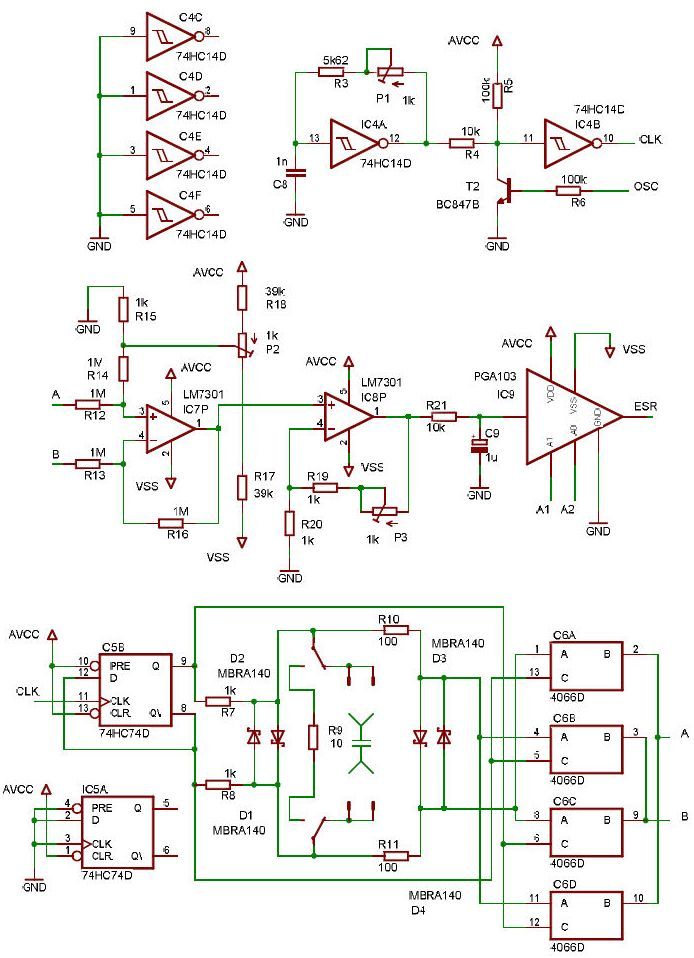
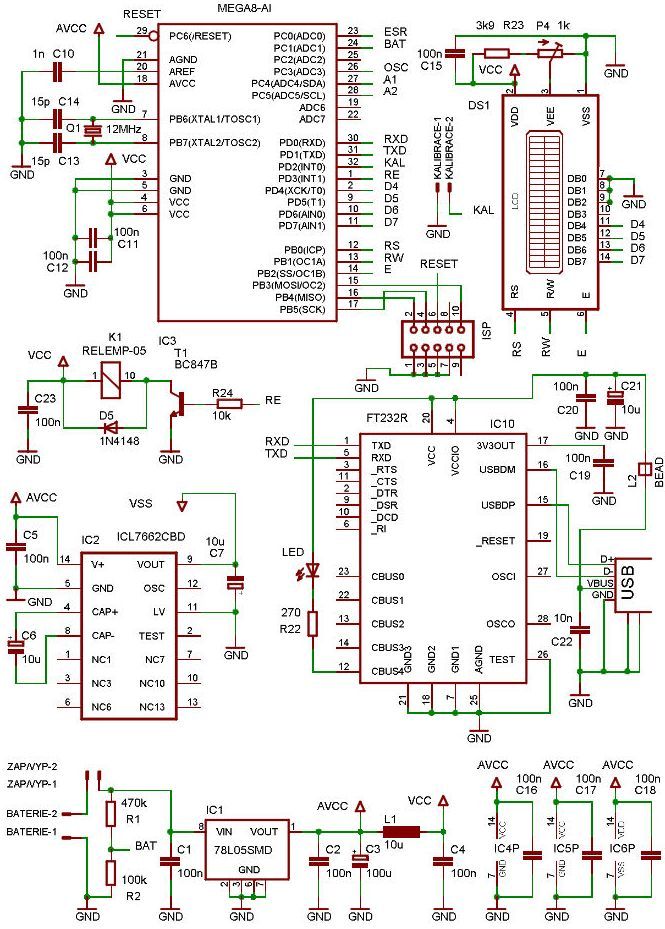
FT232R Communication via USB has been selected for communicating the meter with the personal computer protocol. Simply because this interface is based on virtually everyone computers, unlike today’s extruded parallel or serial ports. The USB interface is also much more resistant to disturbances than the parallel port, for example to use as a 5 V supply.
For this reason, it was decided to use the FT232R circuit whose datasheet can be used found on. This is a USB protocol converter to a serial UART. On the side of the computer the circuit can communicate via the USB 2.0 version 2.0 speed to Full Speed, that is, up to 12 Mbit / s. The circuit communicates across the device (microcontroller) via serial protocol, that is, using the wires for receiving and transmitting serial data (RxD and TxD).
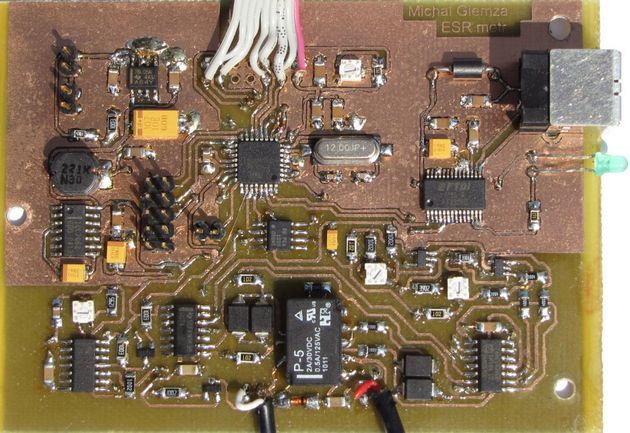
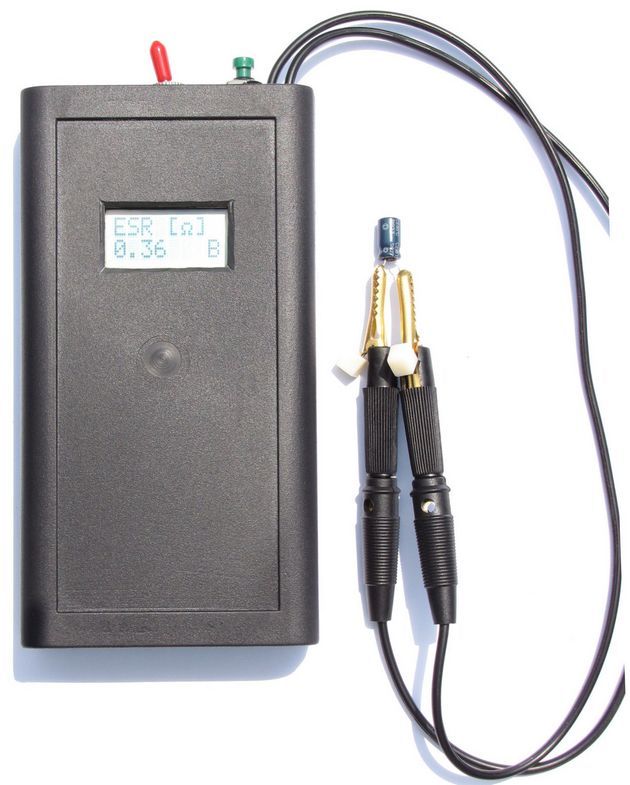
FILE DOWNLOAD LINK LIST (in TXT format): LINKS-25885.zip
Publication date: 2017/10/01 Tags: atmega8 projects, avr project, microcontroller projects
ATmega8 FT232R USB ESR Meter Circuit
USB ESR Meter Circuit Der Hauptteil des Messgeräts ist ein ATmega8-Mikrocontroller, der das gesamte Gerät steuert. Die Hauptaufgabe besteht darin, Messdaten zu verarbeiten und Berechnungen durchzuführen, so dass das Ergebnis ein echter ESR-Wert ist. Dieser Wert wird auf dem LCD angezeigt. Eine weitere Aufgabe des ATmega8-Mikrocontrollers ist die Kommunikation mit einem USB-Controller, der dann mit einem Computer kommuniziert, Messdaten sendet und den Zähler über den Computer steuern kann.
Die Anforderungen des A / D-Wandlers in dieser speziellen Anwendung, dh des ESR-Zählers, sind für die Übertragungszeit überhaupt nicht kritisch. Ein schneller Konverter wird nicht benötigt, er wird auch langsamer, was auch zu einer höheren Genauigkeit führt, was für die Anwendung wichtig ist (das ESR-Meter muss den ESR-Wert nicht mehrmals pro Sekunde messen, es genügt einmal pro Sekunde, aber Genauigkeit ist wichtig). Ein weiterer wichtiger Parameterwandler ist eine Auflösung. Dies ist abhängig vom gewünschten Messbereich des Zählers. Der Vorteil besteht darin, einen Mehrkanalkonverter zu verwenden, wenn es möglich ist, andere als ESR-Mengen zu messen. Ein typisches Beispiel ist die Messung der Batteriespannung, mit der die Entladungsrate überwacht werden kann.
Hello.
I find this project very interesting and would very much like to check it out, but the file 25885.rar is password locked. Would you mind sharing the password?
Regards
Hello,
password for all files: 320volt.com